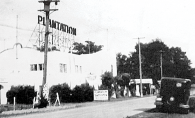The community of White Bear Lake may be on the forefront of a trend. But, in this case, that’s not necessarily good news. With continuing concern over lake water levels, which have dropped to more than 5 feet below normal, government leaders, scientists, residents and others who love the lake have ramped up their efforts to identify causes and find solutions to White Bear Lake's problem.
State and local officials say they’re optimistic that remedies can be identified and financed, but caution against expecting any quick fixes. “I’m sure we will come up with solutions, but they won’t be instant,” says White Bear Lake Mayor Jo Emerson, who testified several times before state legislative committees during the recent session. “This is not something we can solve tomorrow.”
White Bear Lake isn’t the only community affected by low lake levels, Emerson notes. “This is a statewide issue; I’ve heard that from my counterparts all over the state. I think it’s something we will be facing for a long time to come.”
The lake level has been gradually declining since the early 2000s, according to the Minnesota Department of Natural Resources, and reached an all-time low in November 2010.
A study by the United States Geological Survey (USGS) has identified increased groundwater pumping by area communities as the primary cause, which has been exacerbated by the recent drought. According to USGS hydrologist Perry Jones, who led the White Bear Lake Groundwater/Surface Water Interaction Study, Turtle Lake in Shoreview, Birch Lake in White Bear Lake, and Mann, Sunset and South School Section lakes in Washington County, have all experienced similar water-level drops in the last decade.
The Lake Level Resolution Committee, which was formed mid-January to address the White Bear Lake level specifically, has been meeting several times a month to discuss possible solutions, according to committee chair Bryan DeSmet of White Bear Township. One possibility would be to reduce the strain on the Prairie Du Chien Aquifer though mandated conservation, along with connecting to the St. Paul regional water System. Another idea would be changing the area’s water supply to a surface type rather than relying on wells to tap into groundwater.
The other proposal they’ve come up with involves infrastructure: augmenting the lake’s water supply by pumping water from the Mississippi River to the lake. “That type of system is already in place at Snail Lake in Shoreview and Gilfillan Lake in North Oaks,” says DeSmet. “There’s a track record that shows that can work pretty effectively. It’s a regional issue, so a pretty good-sized project could be constructed.”
The DNR and Metropolitan Council “are in the best position to lead a solution forward,” DeSmet says. The council is the lead agency for regional planning. State Sen. Roger Chamberlain of White Bear Lake, who has co-sponsored legislation to seek solutions for the lake-level problem, is optimistic there is enough political support to finance corrective measures. “There is very good bipartisan support that extends beyond White Bear Lake to the region and across the state.”
“The money is there” in the state’s Clean Water Fund to finance the necessary study of possible solutions, he adds. By the 2014 session, “we should have a good idea of possible solutions so we can start working on that,” he says, adding that he has been talking to a Turtle Lake residents’ group in hopes of including that lake in financing for studies and corrective measures.
Rather than any one solution, fixing the lake-level problem will require a combination of measures, Chamberlain says, based on a careful evaluation of issues, including “how we handle our runoff to where we get our water from, and what we do with it when we're done.
“This is not a water shortage issue,” says Chamberlain, who is the Senate Minority Leader. “According to the USGS and Met Council, there is plenty of surface water to supply the water needs of the region; the issue is proper management.”
It will take some time and regionwide cooperation, but Chamberlain remains hopeful.
This article is the first in a series addressing the diminishing water levels of White Bear Lake and possible solutions.









